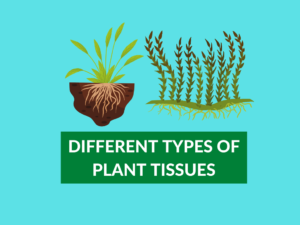The Difference Between Parenchyma and Sclerenchyma: A Comprehensive Guide
Are you familiar with the terms parenchyma and sclerenchyma? Both are types of plant tissues that play important roles in the structure and function of plants. In this article, we will explore the characteristics, examples, and uses of parenchyma and sclerenchyma, as well as highlight the key differences between them.
What is Parenchyma?
Parenchyma is one of the three main types of ground tissues found in plants. It is composed of living cells with thin cell walls, large central vacuoles, and a prominent nucleus. Parenchyma cells have diverse functions and can be found in various parts of a plant.
Examples of Parenchyma:
- Leaf mesophyll cells: These parenchyma cells contain chloroplasts and are responsible for photosynthesis.
- Pith cells: Found in the center of stems and roots, pith cells provide support and store nutrients.
- Cortex cells: These parenchyma cells are present in the outer layer of stems and roots and aid in storage and transportation of substances.
- Fruit pulp: Parenchyma cells in fruit pulp are involved in storing water, sugars, and other nutrients.
What is Sclerenchyma?
Sclerenchyma is another type of ground tissue that provides structural support to plants. Unlike parenchyma, sclerenchyma cells have thick lignified cell walls, making them tough and rigid. These cells are often dead at maturity and provide mechanical strength to the plant.
Examples of Sclerenchyma:
- Fibers: These long, slender cells are commonly found in stems, leaves, and fruit stalks. They provide strength and support to the plant.
- Sclereids: Also known as stone cells, sclereids are short and irregularly shaped cells found in the seed coat, fruit walls, and nutshells. They enhance protection and provide hardness.
Differences Between Parenchyma and Sclerenchyma:
| Difference Area | Parenchyma | Sclerenchyma |
|---|---|---|
| Cell Wall Thickness | Thin | Thick and lignified |
| Cell Wall Composition | Cellulose | Lignin |
| Cell Shape | Variable | Long and pointed (fibers), short and irregular (sclereids) |
| Living/Dead Cells | Living | Dead at maturity |
| Cell Function | Diverse functions, including photosynthesis, storage, and secretion | Structural support and protection |
| Cell Location | Found in various parts of the plant, including leaves, stems, and roots | Commonly found in the outer layers of stems, leaves, and fruit walls |
| Cellular Arrangement | Loosely packed | Tightly packed |
| Cell Size | Variable sizes and shapes | Fibers are long and slender, sclereids are short and irregular |
| Water Absorption | Capable of water absorption | Cannot absorb water |
| Chemical Composition | Primary metabolites | Secondary metabolites |
Conclusion:
In summary, parenchyma and sclerenchyma are two types of plant tissues that differ significantly in their cell wall thickness, composition, shape, function, and location. Parenchyma cells are living with thin cell walls, while sclerenchyma cells are dead at maturity and have thick, lignified cell walls. Parenchyma cells have diverse functions, ranging from photosynthesis to storage, while sclerenchyma cells provide structural support and protection to the plant.
People Also Ask:
Q: What is the main function of parenchyma?
A: Parenchyma has various functions depending on its location, such as photosynthesis in leaf mesophyll cells and storage in pith cells and cortex cells.
Q: Are sclerenchyma cells dead or alive?
A: Sclerenchyma cells are dead at maturity.
Q: How do sclerenchyma cells provide support to plants?
A: The thick and lignified cell walls of sclerenchyma cells provide structural strength and rigidity, giving support to plant organs.
Q: Where can you find fibers in plants?
A: Fibers can be found in various plant parts, including stems, leaves, and fruit stalks.
Q: What are the primary cell wall constituents of parenchyma?
A: Cellulose is the primary constituent of parenchyma cell walls that gives them their thin and flexible nature.


